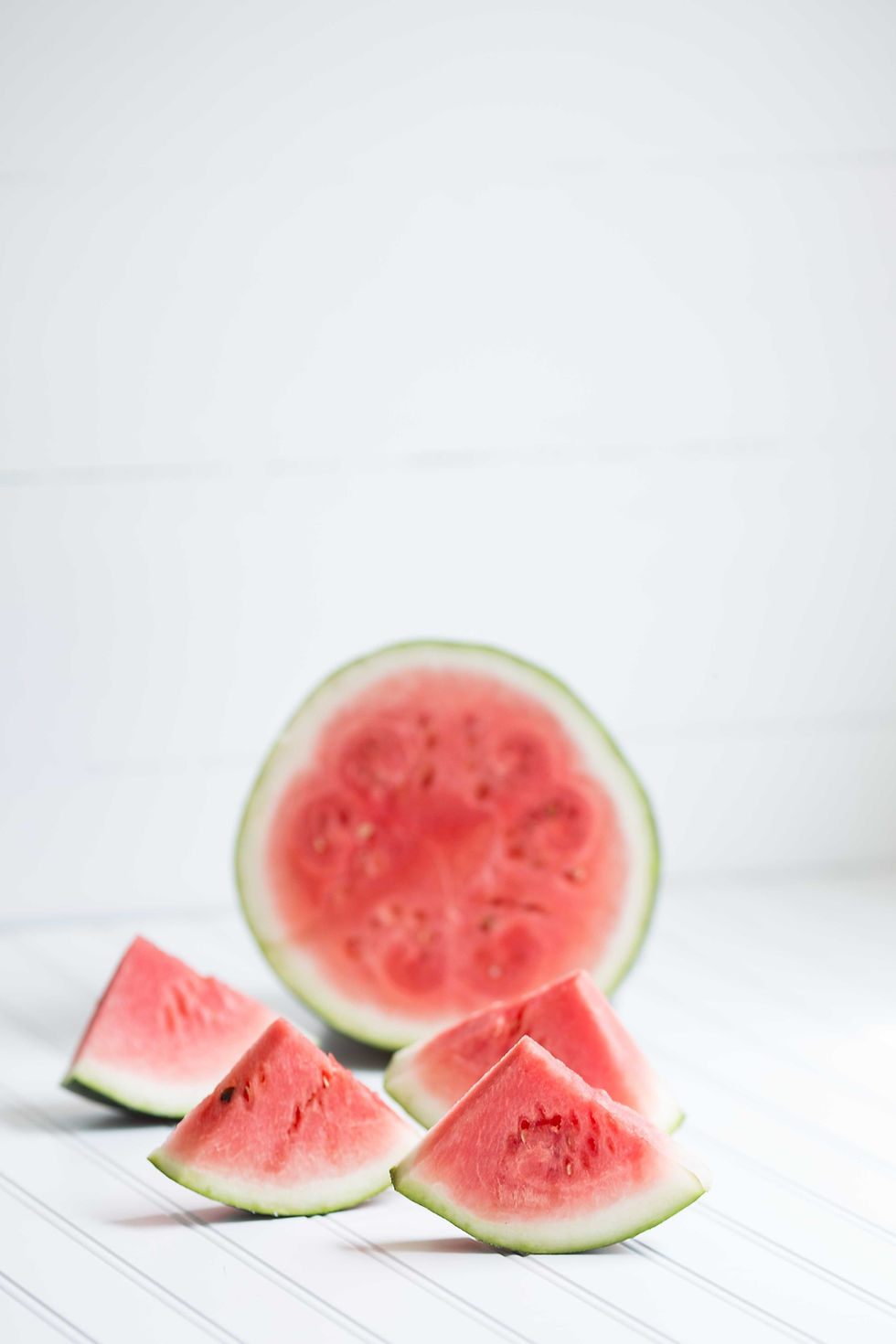
The Watermelon Works
There's nothing like a juicy watermelon on a hot, summer day. It even has the word water built right into it's name, so you know it's hydrating powers are not just hype. Watermelon just symbolizes the sweetness and life we feel during summer, when days are long and we live in the water.
Quick Facts
Hydration: 92-93% water (an excellent thirst quencher for humans and livestock alike)
Nutrition:
1 cup = 45-46 calories
good source of Vitamins A, B, C
includes disease-fighting antioxidants (beta-carotene and lycopene)
other nutrients such as potassium, magnesium, iron, and zinc
The seeds are edible and rich in protein (1 ounce = 8 grams) and fat (1 ounce = 13 grams), so much so that in parts of India, they are dried and ground into flour
In Season: July to September
A Brief History
The watermelon is a globally celebrated water-rich cultivation, earning its place among crops from China to Africa. The Khoi and San tribes of the Kalahari foragers in Africa are believed to have been some of the first to discover this magical melon, and by 2000 BCE it was showing up in Egyptian wall paintings and even seeds and leaves were placed in tombs.
By way of trade, the watermelon made its way to Asia and Europe. It also came to the new world, with the first known colonial cultivation happened in Massachusetts in 1629.
Today, watermelon flesh comes in a variety of colors, from the most familiar, red, to other colorful hues (pink, yellow, green, or white). Some like it with seeds and some like it without. It's grown both ways, so the choice is up to you!
How To
Pick a good one
A good watermelon should seem symmetrical, heavy for its size, and having a nice yellowish spot on the underside means that it spent time ripening. The exterior should be hard to the touch, to the point where you can knock on it and its not soft or squishy in any way (no cracks, dark bruises, or soft spots).
Store
whole, uncut melons can be stored at room temperature
the larger the pieces, the longer it will keep
cut watermelons should be refrigerated in airtight containers for use within 5 days
Wash
the exterior just before cutting
the cutting surface before cutting the flesh to smaller pieces
Eat
cut the flesh into cubes
skewered
shaped into melon-balls for salad
cookie cutter them into any shape you desire
the rind, pickled or candied
the seeds, roasted or ground
puree the flesh for juice, cocktails, or an icy drink
pair with savory partners, such as feta cheese, red onions, or bitter greens such as arugula (great in a salad)
seasoned, with cayenne for a kick, sea salt to add a hint of the sea, or a squeeze of lime for a bit of tang
soak them in water to add some fruity flavor to your drink
juice it
add cubes to a smoothie
carve it and use it as a centerpiece/bowl for fruit
grill it

I don't know about you, but I am just about drooling looking at these pictures already! Whatever the menu, watermelon can be an appetizing addition. Try adding it to a meal this week and tell me what you come up with. Can't wait to see!
REFERENCES
USDA SNAPEd Connection. Watermelon. US Dept of Agriculture. Accessed July 2020. https://snaped.fns.usda.gov/seasonal-produce-guide/watermelon
FoodPrint. Real Food Encyclopedia | Melons. Grace Communications Foundation. 2020. Accessed at https://foodprint.org/real-food/watermelon/.
Gordan B. How Much Water Do You Need. Academy of Nutrition and Dietetics. Accessed at https://www.eatright.org/food/nutrition/healthy-eating/how-much-water-do-you-need
Comments